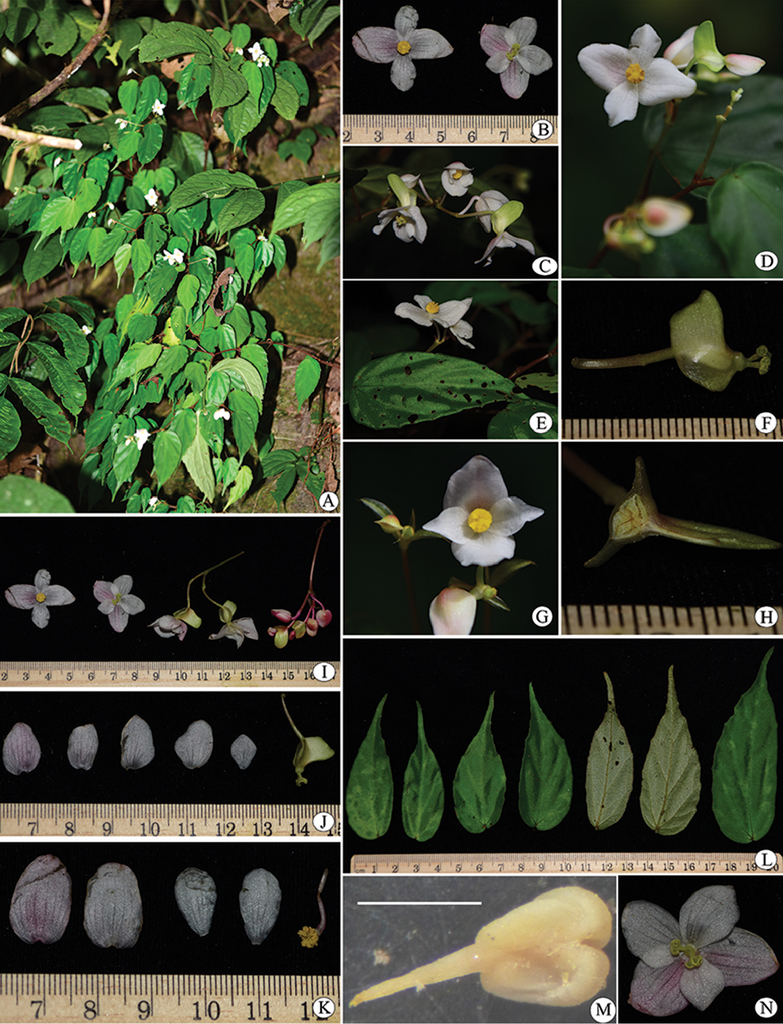Begonia is amongst the largest genera in the angiosperms, with more than 1800 species widely distributed in the tropical and subtropical areas of the world.
During their botanical survey of Medog County of Tibet, China in 2017, researchers from Xishuangbanna Tropical Botanical Garden (XTBG) collected some Begonia specimens and DNA samples. The same species has been discovered in their botanical survey of Kachin State, northern Myanmar, in 2017.
After comparative studies, the researchers confirmed that the species was new to science. They named it as Begonia medogensis and got it published in PhytoKeys.
Begonia medogensis belongs to section Platycentrum. Morphologically, the new species is similar to B. goniotis, B. griffithiana, B. nepalensis and B. sandalifolia, but differs from them by the shape of stipules and leaves, base and margins of leaves, both male and female flowers having unequal perianth segments, cylindroid ovary etc.
Begonia medogensis grows in subtropical areas in Beibeng town, Medog County, Tibet, China, at an elevation of 700–1400 m and in Putao district, Kachin state, Myanmar, at an elevation of 600–1200 m.
Contact
LI Jianwu
Center for Integrative Conservation, Xishuangbanna Tropical Botanical Garden, Chinese Academy of Sciences, Mengla,Yunnan 666303, P. R. China
E-mail: ljw@xtbg.org.cn

Begonia medogensis
A Habitat B–E Flowers F Pedicel and ovary G Male flowers H Ovary I Flowers J Dissection of female flower K Dissection of male flower L Leaves M Anther with filament N Female flower
(Images by LI Jianwu)

